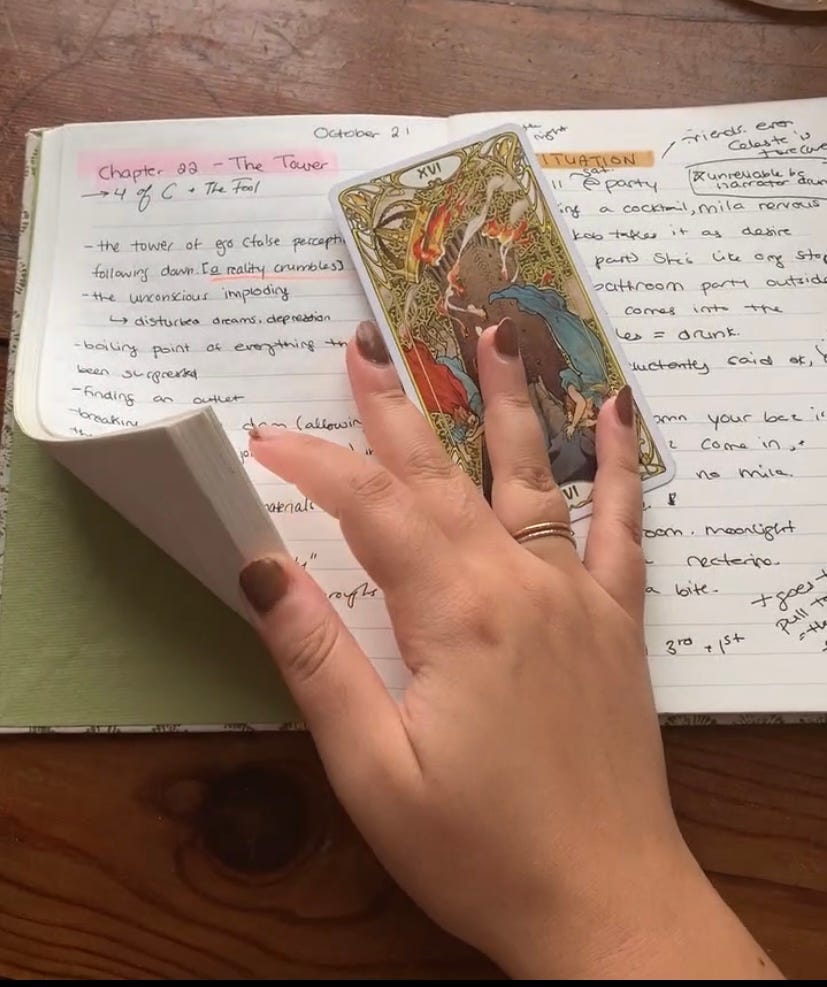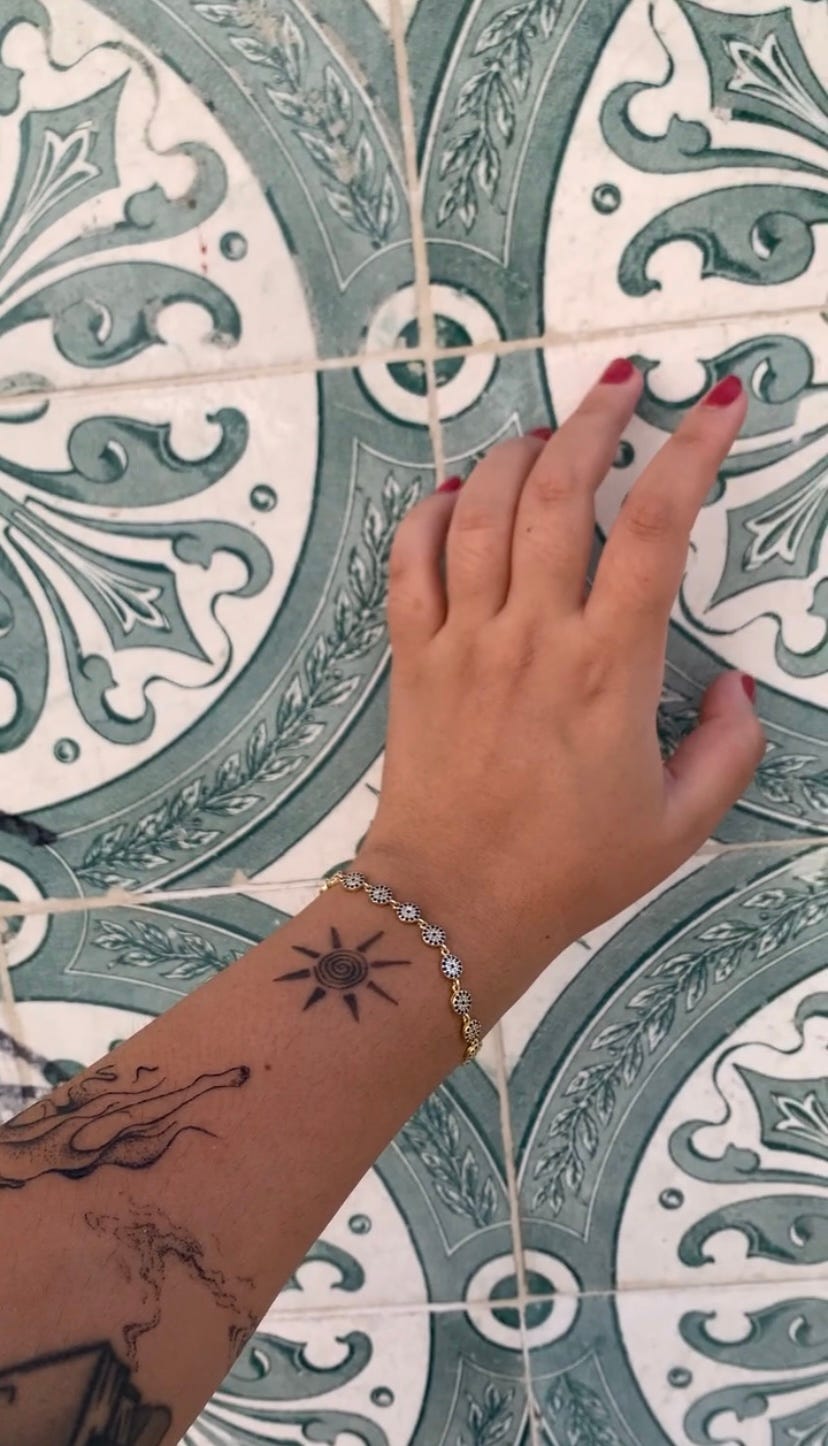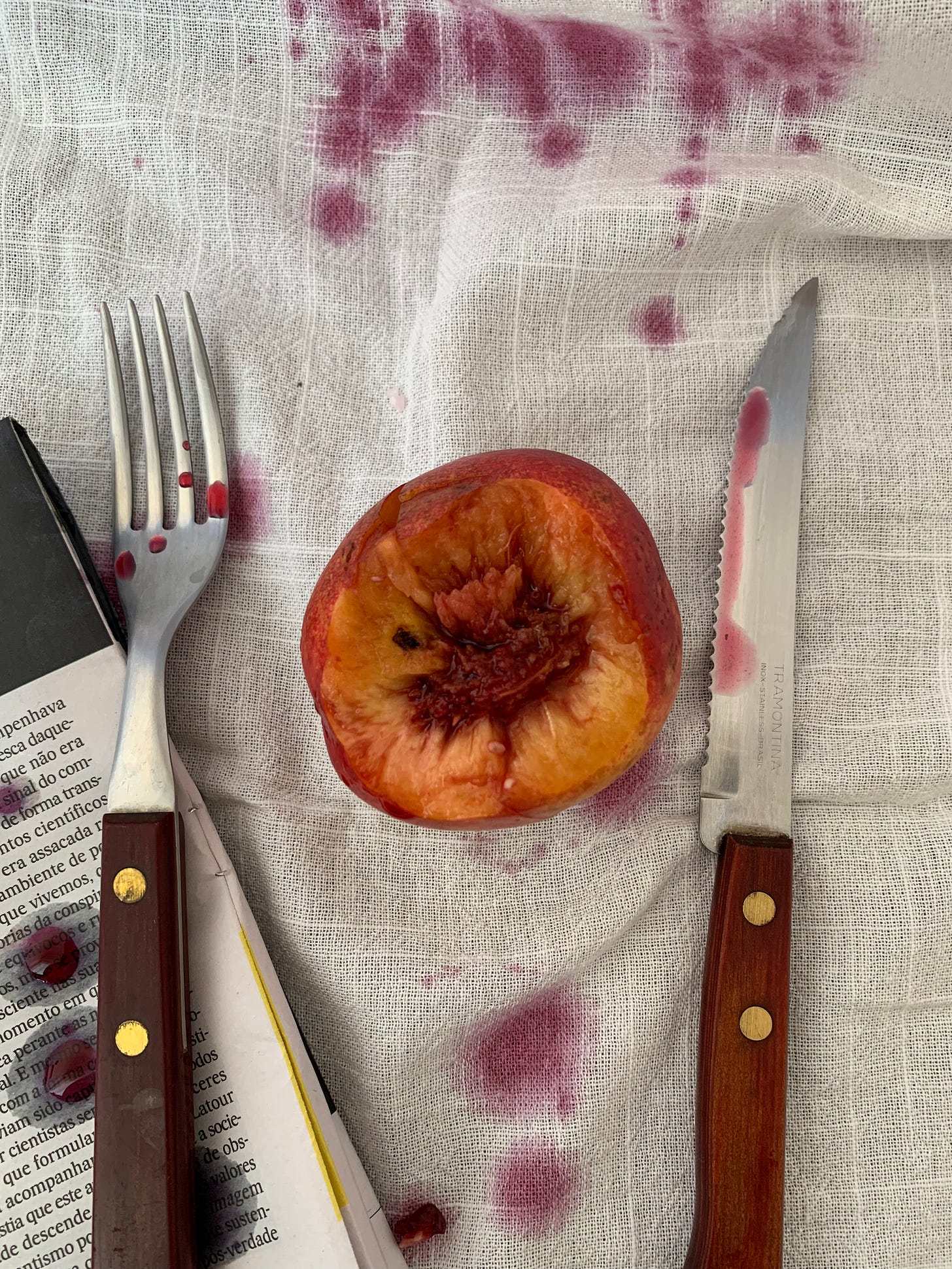It’s no secret that I used tarot cards to write Only Alive on Sundays—I mean the three of swords is proudly displayed on the cover. Why did I do it? I love using tarot as a creative tool. How did I do it? The nitty gritty of it all is laid bare, below. Plus, some other insights into the book to demystify the symbolism of it all (and boy, is it symbol-heavy).

Each chapter is inspired by a card in the Major Arcana.
First, I had to get the basic idea of the story down: our main character Mila works at a magical antique shop. There’s two love interests: one she just meets as we’re meeting her, and another one that is clouded in so much history and Mila’s own perceptions that we hardly meet the real him.
Then, I pulled a card. Chapter one was to be The Moon. I thought: how perfectly aligned is that? The Moon is all about secrets coming to light, the things that lurk in the shadows. I am well versed in tarot language and symbolism, but it was important for me to read-up on each card before diving into writing the chapters. I wanted a fully informed take; and so I looked to Rachel Pollack, her book 78 Degrees of Wisdom has been my tarot life-line for a while.
What kept things fun for me is that I didn’t pre-pull a card for each chapter all at the same time. Every time I finished with a card/chapter, I had no idea what would happen next. It kept me wanting to come back for more at the end of each writing session.
Chapter 4 was The High Priestess, I knew Mila had to lean into her intuition. I also thought it would be a fun play on words; so she got high. Chapter 7 was The Devil, the point of the story where Mila gives into temptation, yes, but also the threat of falling heavy back into her old ways, her shadow ways (that we actually haven’t seen yet), is prominent.
Each writing day (which of course spanned into several days/weeks per card/chapter) began with a ritualistic card pull, research, outlining, and finally, writing. Followed by editing alone and with my editor for days and days. When I felt okay with where the story was, I’d return for another card/chapter. Until I had pulled all 22 of the Major Arcana cards.
Once I pulled The Chariot for chapter 21, and knew that the only card left was The Tower, inevitably becoming the last chapter, I had even more fun. For my last chapter, I’d allow the story to fall into chaos. Oddly enough, at that point the story was beginning to wrap itself up and the card made perfect sense. I just had to add a touch of my characteristic cyclical story-telling technique and voila! Only Alive on Sundays was completed.
The most challenging part of the experience was giving up control. I think that as authors, writing is typically a way to control the narrative (of the story and our lives). Using tarot and surrendering the plot of my story while retaining full creative control was a masterclass in patience. Sometimes, the card I pulled didn’t make sense for where the story was heading. But of course, as I did more research, challenged popular understandings of the card, and sat with it more, the story revealed itself to me in a magical way. After all, it is a magical book (content and context!). For example, The Chariot after The Wheel made no sense when I first pulled it. How can we go from a turn of fate, whimsical and elusive, to a more stead-fast, illusive, masculine, approach to moving through life? But I made it work… you’ll just have to read the book to see how it all clicked together.
Some other (juicy) secrets
I think purely in symbols. I’m constantly seeing the world in stories and metaphors. Which is sure to bleed into my creative work. It’s how I make sense of the things around me. I am an absurdist by nature. Nothing means anything! And so, everything can mean anything!
What’s up with the tiles?
For context, I was living in the (unofficial) land of tiles (Portugal) at the time of writing this book. I was genuinely in awe of their craftsmanship and the beauty they added to the cities. Coming from Toronto where all the buildings are monotonous, and sorry, but mostly ugly, living in Lisbon was a huge change of visual pace for me. It was completely normal there to go into a bathroom and just be presented with the most beautiful tiles, works of art sitting stalely where people pee. Mostly the tiles were on buildings though. I wanted to inject my sense of wonder on to the idea of bathroom tiles, which are incredibly boring where I come from. I decided they had stories to tell about the people who occupy their presence. I say all this, but it was much more subconscious when I was writing the book. I think I just sat down to describe Mila’s bathroom in chapter 2… and it kind of just happened. It was a classic “what did the author mean about the blue curtains?” kind of moment—until it wasn’t.
The Panopticon, or: the realms between first and third person
The panopticon is a prison layout/system in which all of the prisoners can be observed by a single officer in a tower in the centre of the room. The prisoners are never certain if the officer is in the tower, and so they behave accordingly as if they were being watched. That’s the idea any way.
Much of Only Alive on Sundays is an exploration of living in a panopticon-esque world, an internalized gaze that prevents us from being our authentic selves. In Mila’s (and many women’s….) lives, the male gaze plays the role of the officer. Internalized, it taints our actions and behaviours by the standards of the patriarchy. The story explores this idea generally, but more overtly through narration.
The novella starts in third person and suddenly, when Mila admits she’s only alive on Sunday (ha-ha, this happens in the Sun card chapter), there’s a shift to the first person. The intention is for the reader to realize even the third person parts of the story were Mila narrating, but it was mediated by her inability to step into herself fully. This is a coming-of-age story after all.
It’s not lost on me that there is no world in which OAoS would pass the Bechdel test. Much of it is centred on the love interests; and be it as it may unfortunate, I do think it speaks to our society’s obsession with romantic love. When you see how absurd it is in the story (and when Mila does too) it makes you take a step back.
Nectar is the juice of the gods
Nectar/ambrosia grant the gods immortality when drunk. (Aren’t gods supposed to be immortal anyway? I’m onto you greek mythology…) Only Alive on Sundays is a very sticky story with its summer heat, love interest drama, and the incessant meddling of the universe’s universe. The nectarine was a perfect embodiment of that. But! Also! I think there’s something to be said about seeing life as a juicy fruit to be bitten into and devoured delicately, messily. Life is not a simple blueberry you can plop into your mouth tidy and neat. It is a nectarine tenacious and syrupy, sweet and sour at the same time.
“The blood of love seeps out from eyes like the juice of sweet nectarines. It drips down throats, chests, spines—a reminder that love is the deed of the living, always messy and an indication of desire as a sticky form of suffering.” — Only Alive on Sundays
If you’ve made it all the way here: I know the author is supposed to be dead, I just love talking my shit—thanks for indulging me. You can get a copy here. Have any other questions about the book? Use the comments section as an AMA.











this is such an interesting idea!! I'm really tempted to try it myself. also I need a copy of your book asap it sounds incredible
love the sneak peek into your creative process!